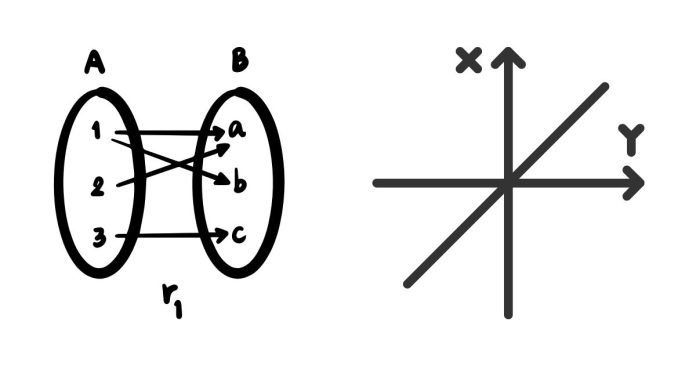To find the domain and range of a function, it’s essential to understand the behavior of the function, particularly the values it can take for the independent variable (domain) and the dependent variable (range). Here’s a step-by-step guide:
1. Finding the Domain
The domain of a function is the set of all possible values of the independent variable (usually xx) for which the function is defined.
Steps to find the domain:
- Look for restrictions: Identify if the function has any restrictions such as division by zero, square roots of negative numbers, or logarithms of non-positive values.
- For example, in f(x)=1x−2f(x) = \frac{1}{x-2}, the function is undefined when x=2x = 2 because division by zero occurs. Therefore, the domain is all real numbers except x=2x = 2.
- In f(x)=x−1f(x) = \sqrt{x-1}, the function is only defined when the expression inside the square root is greater than or equal to zero. Therefore, x−1≥0x-1 \geq 0, so x≥1x \geq 1.
- Consider the type of function: Different types of functions (e.g., polynomials, rational functions, trigonometric functions) have different domain characteristics.
- Polynomial functions such as f(x)=x2+3x−5f(x) = x^2 + 3x – 5 are defined for all real values of xx.
Example:
For f(x)=1x−3f(x) = \frac{1}{x-3}, the domain is x∈(−∞,3)∪(3,∞)x \in (-\infty, 3) \cup (3, \infty), excluding x=3x = 3.
2. Finding the Range
The range of a function is the set of all possible values that the function can take as the output (dependent variable, usually yy).
Steps to find the range:
- Analyze the function’s behavior: For most functions, you can calculate the range by considering the output values for different inputs.
- For linear functions like f(x)=2x+1f(x) = 2x + 1, the range is all real numbers, because no matter what value of xx you choose, you can get any real number as an output.
- For quadratic functions like f(x)=x2f(x) = x^2, the range is non-negative real numbers ([0,∞)[0, \infty)), because the square of any real number is always non-negative.
- Look for horizontal asymptotes: For rational functions or functions with limits, horizontal asymptotes can help define the range.
- For example, in f(x)=1xf(x) = \frac{1}{x}, the range is y∈(−∞,0)∪(0,∞)y \in (-\infty, 0) \cup (0, \infty), because the function never reaches zero.
Example:
For f(x)=x−1f(x) = \sqrt{x-1}, the domain is x≥1x \geq 1, and the range is y≥0y \geq 0 because the square root of a non-negative number is always non-negative.
3. Examples
Example 1: Linear Function
Function: f(x)=3x+5f(x) = 3x + 5
- Domain: Since linear functions have no restrictions, the domain is all real numbers, x∈(−∞,∞)x \in (-\infty, \infty).
- Range: Similarly, the range is all real numbers, y∈(−∞,∞)y \in (-\infty, \infty).
Example 2: Square Root Function
Function: f(x)=x−2f(x) = \sqrt{x-2}
- Domain: For the square root function, the expression inside the square root must be non-negative, so x−2≥0⇒x≥2x – 2 \geq 0 \Rightarrow x \geq 2. Therefore, the domain is x∈[2,∞)x \in [2, \infty).
- Range: Since the square root function gives non-negative values, the range is y∈[0,∞)y \in [0, \infty).
Example 3: Rational Function
Function: f(x)=1x−4f(x) = \frac{1}{x-4}
- Domain: The function is undefined at x=4x = 4 because division by zero occurs. Therefore, the domain is x∈(−∞,4)∪(4,∞)x \in (-\infty, 4) \cup (4, \infty).
- Range: The function can take any non-zero value because the denominator can never be zero. Hence, the range is y∈(−∞,0)∪(0,∞)y \in (-\infty, 0) \cup (0, \infty).
4. Summary
- Domain: Identify the valid input values for which the function is defined. Look for restrictions like division by zero, square roots of negative numbers, etc.
- Range: Analyze the output values the function can produce based on the domain, considering the behavior of the function.
By carefully analyzing the function’s form and its restrictions, you can determine the domain and range for most functions.


